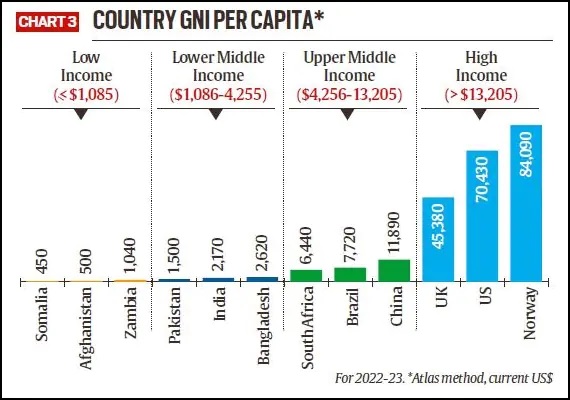900 319 0030
enquiry@shankarias.in
In Independence Day address, PM Narendra Modi asked Indians to embrace “Panch Pran” (five vows) by 2047 when the country celebrates 100 years of independence.
The first vow is for India to become a developed country in the next 25 years.

China’s per capita income is 5.5 times that of India, and the UK’s is almost 33 times.
As of 2013, India had 218 million people living in extreme poverty — which made India home to the most number of poor people in the world.
References